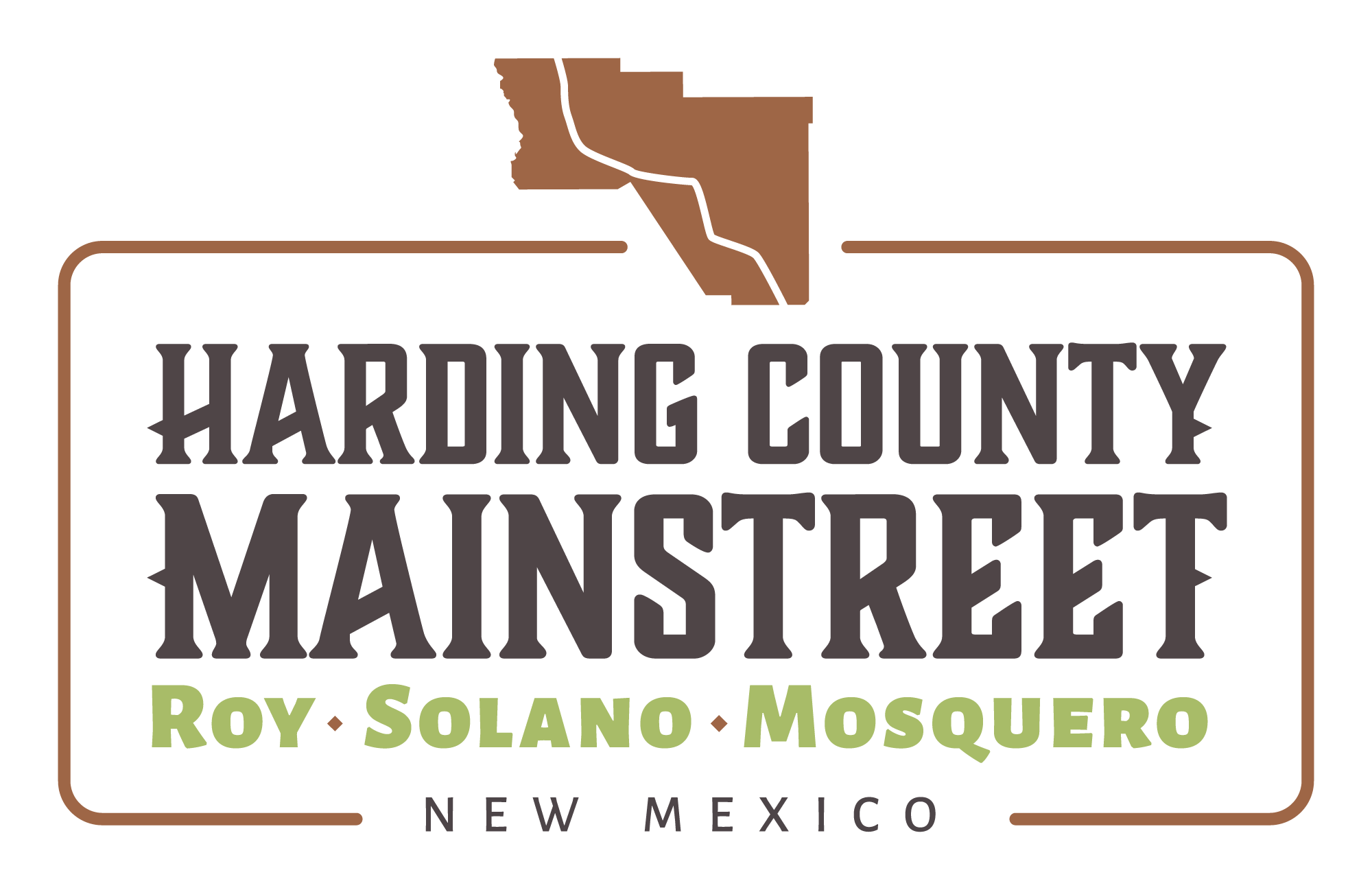La Frontera del Llano Scenic Byway (the edge of the plains in Spanish) starts at Abbott, a place you’d think wouldn’t warrant a name if there weren’t a sign there to prove it. Most of the byway (NM 39) runs through Harding County, where cattle outnumber people seven to one. The county has a population of about 750, less than one person per square mile. It may seem strange that there is a national forest in Harding County, but it’s true. The northern part of the byway runs through the Kiowa and Rita Blanca National Grasslands (505-346-3900), a unit of the Cibola National Forest. This is a forest of grass, the rolling short grass prairie of the southern Great Plains.
This vast rangeland accounts for 99.7% of the county. Roy, another ten miles south on NM 39, is pretty quiet now, but it once thrived. The Dawson Railway was constructed through the area in 1906 to link Tucumcari to the coalfields in Dawson. During the 1920s and ’30s, dry ice was produced here because the town overlies the Bravo Dome carbon dioxide field. Roy was a central shipping point for beans, wheat, cream, and eggs until the Dust Bowl ended most farming in the 1930s. Roy’s main streets are lined with buildings from an earlier era, like the red brick Floersheim Mercantile Company. Incorporated in 1897, it was one of the largest mercantile enterprises in northern New Mexico. Workers constructing the Dawson Railway settled Mosquero, 18 miles south of Roy and the Harding County seat, in 1906. The last cattle trail created by Charles Goodnight, marking the end of his operations in New Mexico, passed through the area. Today, Mosquero is primarily a cattle ranching community. The byway is adorned with a number of beautiful little mission churches. Like a string of pearls they stretch from Solano to Gallegos. Solano’s Union Church was built in 1912 of native stone. The coat hooks, made of horse shoes in the foyer, remind you that you’re in ranch country. Its folding wooden seats were taken from the school gymnasium in 1913. St. Joseph’s Catholic Church in Mosquero was created from a school and the teacher’s house in the 1930s, when a transept was built between the two buildings to join them.
Harding County, NM
Photo by Elmo Baca.



